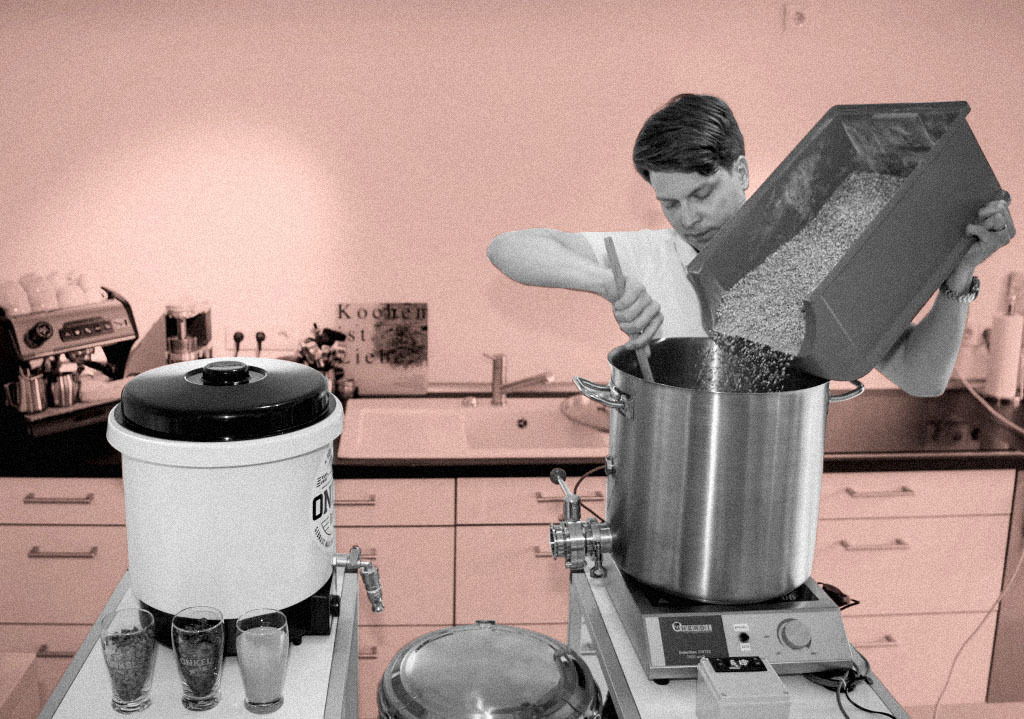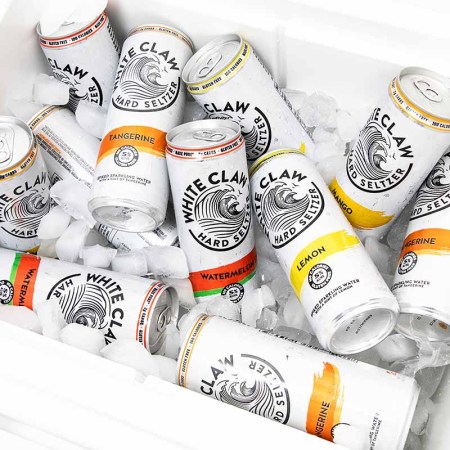As you can probably tell from the number of sourdough photos you’ve come across on social media lately, many of us have gotten a little more experimental in the kitchen during quarantine. With all the extra time spent at home as the pandemic rages on, who can blame us for seeking out a new hobby to distract us?
Baking’s not for everyone, though, and if you’re looking for a boozier use for yeast, there’s arguably no better time than now to try your hand at homebrewing your own beer. (A stress relief activity that ends with you having a fridge full of beer? Two birds, one stone.) Of course, if you’re looking to get into homebrewing, you’ll need to stock up on supplies and study up first. There’s definitely a learning curve; to help you navigate it, we spoke with seven professional brewers to get their thoughts on the most common mistakes that beginner homebrewers make — and how to avoid them.
Scott Ungermann, Brewmaster at Anchor Brewing
The most common mistake that I have seen novice homebrewers make is assuming they’re going to make great beer right out of the gate and that everyone will love it. The easiest way to avoid that? Drink it all yourself (or with just your homebrew partner — always good to have a partner) and be critical. Work on your game a bit before foisting it on your friends and family. And don’t be afraid to dump it if it’s not good. Also, work on perfecting one recipe, one style, and then branch out. Go to a well-recommended local homebrew store (in person — once that is legal) and ask a bunch of questions. Taste a bunch of things, know what style you want to make and why. Start simple. Don’t just go online and buy a bunch of stuff without talking to anyone — there are great resources online, but nothing that you can taste, smell and touch. I haven’t bought homebrewing equipment in over 20 years, so I can’t really recommend much these days except this: Start simple.
Chris Juergen, Brewmaster at Karbach Brewing Co.
The biggest mistake I see home brewers make is a lack of understanding around sanitation. In the brewing world, cleaning and sanitation is everything, which can be tricky to manage since the brewing process creates a perfect media for little organisms to live and grow in. As brewers, we only want the selected strain of yeast to grow and make alcohol. If you allow other organisms to get in and start to grow, they will produce lots of unpleasant organisms that no one wants in their beer. The key to cleaning brewery equipment is to break it down completely and hand-wash it with an appropriate cleaner. Putting parts in the dishwasher is not going to work.
Homebrew shops sell a variety of different cleaners, but first and foremost you want to make sure that you are removing all residue and biofilms that are on the equipment. Next, inspect all your rubber parts. Over time, the gaskets and rubber parts will start to crack and break apart. These little cracks and crevasses are perfect spots for organisms to live and hide out while they wait for the next batch of wort come through. Finally, sanitize your equipment right before use. Only use food-grade sanitizers, and follow the usage rates. More is not always better here!
The most important thing I would share with someone who is starting out as a homebrewer is to have fun. After all, homebrewing is a hobby, and hobbies are meant to be fun! The other piece of advice I would give is to start small and keep it simple. You can make beer on a $100 budget, or you can go and drop several thousand dollars on some fully automated system — at the end of the day, both can produce really nice beers. Part of the fun is learning the process and letting your creative juices flow.
I recommend keeping brewing recipes simple to start. A simple recipe can really highlight the ingredients and help build a true understanding of the flavor components of different hops, malts and yeast. For example, Karbach’s Hopadillo IPA is brewed with five to six malt varieties and eight to nine hop varieties. This adds a lot of complexity to the beer, but it is difficult for a new drinker or brewer to know what each ingredient is bringing to the table. Start simple, learn the flavors and aromas that come from each ingredient, and then work to build complexity as you continue to brew.
Josh Waldman, Brewmaster at Elysian Brewing
I think the biggest mistake for novice homebrewers is setting expectations too high. Brewing is tricky, the devil’s in the details, and it’s really hard to know which details matter. Try a two-prong approach: Make better beer and worry less about how it turns out. Get friendly with a professional brewer and ask if they’ll let you have some yeast for homebrewing. Professional brewers’ yeast should be very healthy and ready to rock, which gives you the best chance of avoiding off-flavors (because you’ve already cleaned everything within an inch of its life, right? Dead serious; everything must be obsessively cleaned). And as far as worrying less, there’s an old adage that says “It takes beer to make beer.” Enjoy a beer and have fun.
As for equipment, standard kits are available at most homebrew stores, and those are adequate for the first go-around. My suggestion, and this is probably contrary to what most would say, get a nice mill — one that has a motor or drill attachment and two-rollers. You don’t need a mill at first. You can buy pre-milled grain, or many homebrew shops will let you mill onsite. That’s less investment, but this is fun and educational, so see the whole process through. There’s something romantic about holding whole kernels, running your hands through a pile of malt, and then seeing the milled grist before you mash-in. It just gives a way deeper connection to the process, which, at its heart, is agriculture transformed into beer.
Carl Heinz, Head Brewer at Breckenridge Brewery
A lot of first time homebrewers are eager to make really complicated and intricate beers right away, and this can often produce disappointing results. Avoid biting off more than you can handle by focusing on the fundamentals initially. First learn to craft simple beers well and develop an understanding of how the materials and processes impact the final product before moving to more advanced styles. Also, good brewing is 75 percent cleaning and preparation, never forget that.
The Complete Joy of Homebrewing by Charlie Papazian is a classic and indispensable resource for anyone starting out. I recommend starting simple and avoiding larger purchases until you’ve brewed a few batches on your stove top with malt extract and have decided if it’s a hobby you enjoy or not. If it turns out to be a passion, I recommend a beer fridge and kegging equipment ASAP because hand bottling is rather tedious.
Victor Novak, Brewmaster at Golden Road Brewing
I think the biggest mistake that people make is thinking it’s going to be easy. You can watch all the YouTube videos you want, but until you realize the scope of the equipment needed and how much cleaning you have to do to make great beer, you have no idea what you’re in for. I don’t want people to get too intimidated, but it’s anything but easy. I once had a chef condescendingly ask me, “How hard is it to make beer? You just throw some grain in your pot and voila, you’re done.” I said, “A lot harder than making a simple salad that’s not overdressed and soggy, but you keep sending those out every night.” We haven’t spoken much since.
How to avoid that? Join a homebrew club or work with a buddy or significant other. It’s so much easier when you can learn from and with someone else to cut out a lot of the BS. And there’s a lot of BS out there. I love talking to homebrewers, since I started off as one, so I can guide them into doing things the right way and eliminating a lot of unnecessary stress. Try to learn from someone who’s already doing it well. No matter what, buy John Palmer’s How to Brew. It will guide you all the way from beginner to pro. In terms of equipment, consult your local or online homebrew supply shop. You’re going to have to buy your raw materials and equipment from someone, and they have a vested interest in your success. If they make it seem too hard, are condescending, or sell you a bunch of stuff you don’t need, you’re going to give up, which will hurt their chances of having a successful business. Also, talk to your local brewers. Most of us started out homebrewing, and we love to pay it forward by helping out the next generation of homebrewers and brewers.
Fal Allen, Master Brewer at Anderson Valley Brewing Company
I think that the biggest thing one can do to improve their homebrew (especially the first time out) is to use a heathy liquid yeast starter to ferment the beer. Most first-time homebrewers use a packet of dried yeast, and that can sometimes make acceptable beer, but often it does not. The reason people use the dried yeast is because it’s easy. But with a little more time and a little expense, one can buy a good liquid yeast culture, make a small starter, and brew much better beer. Good yeast and good water are the real two cornerstones of making great a beer; everything else takes a back seat to these two vital ingredients.
Be super clean — you can never be too clean. Be sure to sanitize anything that will come into contact with the wort after boiling it. Boil the full volume of the beer you want to brew. Even if you are high gravity brewing (i.e. adding water to the high gravity wort in the fermenter to reach the correct volume) boil the water you are planning on adding. After boiling it, let it cool down, and then add it to the fermenter. You want to boil all the water used because there are microbes in your water. These microbes may not be harmful to you, but they may create off flavors in your beer. As far as equipment, you don’t have to have fancy equipment to make great beer, but you do have to keep the equipment you have clean and sanitary. You can never be too clean.
Steve Gonzalez, Stone Brewing Senior Manager of Brewing & Innovation – Small Batch
Be patient! Fermentation can go very rapidly at first once the fermenting beer hits high krausen. You will start with a lag, then very vigorous fermentation, then let it mellow for a few days before you rack to kegs or bottles. That rapid fermentation at high krausen will be followed by a very slow fermentation to get to the end of fermentation. Racking too soon will result in over-carbonation, buttery diacetyl, excessive sediment, and all sorts of other issues. Take some extra time to let the beer mature! There are so many options when it comes to resources and supplies, but my favorite source is MoreBeer.com. Starter kits for all price ranges!
Join America's Fastest Growing Spirits Newsletter THE SPILL. Unlock all the reviews, recipes and revelry — and get 15% off award-winning La Tierra de Acre Mezcal.




















